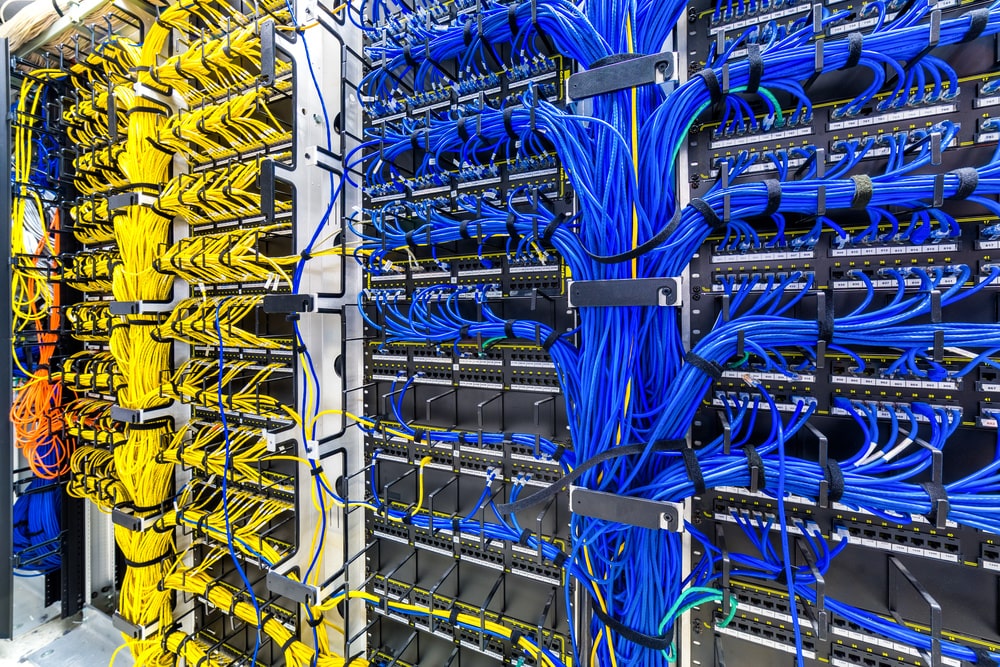In today’s competitive business environment, cost-effective operations are crucial for success. One way to achieve this is through effective IT maintenance. From minimizing downtime to improving system performance, proper IT maintenance can help businesses increase revenue and reduce expenses. In this blog post, we will explore what IT maintenance is, its different types and benefits, as well as how businesses can implement an effective maintenance plan.
What is IT Maintenance?
IT Maintenance is the process of ensuring that all the components and systems of a company’s IT infrastructure are functioning as expected. This involves scanning, regular checks, updates, backups and data management to prevent or correct any issues that might arise over time. It also includes estimating future maintenance needs and costs to ensure stable cost-effective operations.
Effective IT Maintenance ensures smooth business operations by keeping technology up-to-date with minimal disruptions to daily activities.
Corrective maintenance is another essential aspect of IT maintenance, which entails identifying and fixing problems in the system when they occur. By practicing proactive IT maintenance measures like regular checks, businesses can save money on costly corrective repairs while reducing downtime due to system failures. Ultimately, effective IT Maintenance ensures smooth business operations by keeping technology up-to-date with minimal disruptions to daily activities.
Definition
IT maintenance refers to the ongoing processes and activities involved in ensuring that computer systems, hardware, software programs, and other related technologies are working properly. There are three types of IT maintenance: preventive, corrective, and predictive. Preventive maintenance involves routine checks and backups to prevent problems from occurring in the first place. Corrective maintenance includes troubleshooting issues that arise unexpectedly or as part of a regular check-up. Finally, predictive maintenance uses data analysis to estimate when repairs may be needed before a failure occurs.
Best practices for IT maintenance include establishing regular schedules for backups and updates; conducting thorough diagnostics; monitoring system performance regularly; documenting all activities performed on the network; creating policies around access control permissions; implementing security protocols such as firewalls or antivirus software for viruses; training staff on proper usage procedures for equipment/software applications used by them daily. By following these best practices businesses can reduce downtime caused by failures while increasing revenue through more efficient operations.

Importance of IT Maintenance in Business Operations
Regular IT maintenance is a critical aspect of cost-effective business operations. By conducting routine system checks, businesses can reduce operational expenses by preventing costly downtime and repairs. Proper upkeep also improves system performance and reliability, ensuring that employees have access to the tools they need to get their jobs done efficiently.
IT maintenance also lowers the risk of security breaches through updates and patches. Without these corrective measures in place, businesses are vulnerable to data loss or theft from cyber-attacks. Backing up crucial data can provide an estimate of how much damage could occur if there were a breach in security; however, regular IT maintenance is key to avoiding such risks altogether. Overall, investing in ongoing IT maintenance ensures that your business runs smoothly while safeguarding against potential threats.
Types of IT Maintenance
IT maintenance is an essential aspect of any business operation. It involves three types of maintenance, namely preventive, corrective, and predictive. Preventive maintenance focuses on preventing potential problems before they occur through routine check-ups and system updates. Corrective maintenance involves fixing issues that have already occurred in the IT system to restore it to optimal performance levels. Predictive maintenance uses data analysis tools to identify potential problems in the IT infrastructure before they happen and take action accordingly.
Each type of IT maintenance serves a crucial role in ensuring cost-effective operations for businesses. By implementing regular preventative measures, businesses can reduce costly downtime caused by unexpected breakdowns or malfunctions in their systems. Corrective measures are necessary when preventable incidents do occur; swift intervention can mitigate negative effects on revenues or customer experience as well as extend the life cycle of investments made into hardware or software assets down the line over time.
Predictive Maintenance allows companies to anticipate future challenges proactively with informed decision-making capabilities based on reliable data analysis techniques such as machine learning algorithms or other artificial intelligence solutions available today which help detect patterns indicative failure risk factors within operational processes both effectively efficiently ahead-of-time so that appropriate countermeasures could be taken well beforehand without affecting business-critical applications at large-scale potentially catastrophic events resulting from lack thereof may cost organizations tens if not hundreds thousands dollars lost revenue alone!
Preventive Maintenance
Regular backups and updates, hardware inspections and cleaning, security checks, and virus scans are all essential components of preventive maintenance for your IT systems. Regularly backing up important data can prevent the catastrophic loss of valuable information that could result from a system failure or cyber-attack. Updating software programs is also critical to ensure they function effectively and securely.
Hardware inspections involve checking equipment such as servers, routers, switches, printers for physical damage or degradation due to wear and tear. Regular cleaning removes dust buildup which can lead to overheating problems or other issues. Additionally, regular security checks help identify vulnerabilities in your network infrastructure while virus scans detect malware before it causes serious damage. By adopting these practices as part of your IT maintenance routine you will greatly reduce downtime caused by system failures while ensuring business continuity through reliable operations at all times.

Corrective Maintenance
Corrective Maintenance is a critical aspect of IT maintenance that helps businesses prevent downtime and ensure system availability. This type of maintenance involves fixing issues that arise unexpectedly, such as software bugs, hardware failures or data loss.
To effectively perform corrective maintenance, businesses should have the necessary resources and expertise to troubleshoot problems quickly and efficiently. Here are some key tasks involved in corrective maintenance:
- Troubleshooting software bugs and glitches
- Replacing malfunctioning hardware components
- Restoring data from backups after a system failure
By regularly performing these tasks, businesses can minimize the impact of unexpected IT issues on their operations, reducing costs associated with lost productivity or revenue. Corrective Maintenance is an important element for any business seeking optimal performance from their IT systems while keeping operating expenses under control.
Predictive Maintenance
Monitoring system performance is crucial for predicting maintenance needs before issues arise. By analyzing data and identifying patterns, predictive analytics can anticipate when equipment or systems may require maintenance, allowing for proactive measures to be implemented. This approach not only saves time but also reduces costs associated with reactive repairs.
Implementing proactive measures is a key component of successful predictive maintenance strategies. By conducting regular check-ups on equipment and systems and addressing any potential problems early on, businesses can prevent future issues from occurring altogether. Taking these necessary steps helps ensure cost-effective operations while maximizing revenue generation through increased productivity and decreased downtime due to unexpected breakdowns or outages.
Benefits of IT Maintenance
Ensuring IT maintenance is up-to-date can significantly reduce downtime, which means less time and money lost due to system failures. Regular checks on hardware and software functionality, security updates, and backups ensure that when issues do arise they are promptly addressed before becoming major problems.
Effective IT maintenance can help improve the performance of systems by identifying areas for improvement or upgrades. By optimizing system settings, removing unnecessary programs or files, or installing new hardware components a business can increase productivity without having to invest in costly infrastructure changes.
Reduced Downtime
Regular updates and proactive monitoring are crucial in reducing downtime for businesses. By scheduling regular updates, system crashes can be avoided by ensuring that all software is up-to-date and functioning properly. Additionally, proactive monitoring allows potential issues to be identified before they occur, allowing IT teams to take preventative measures.
Quick response time is also essential in resolving any IT-related problems that may arise. With a fast and efficient response time, businesses can minimize the impact of any downtime on their operations. It’s important for IT maintenance teams to have the expertise necessary to quickly diagnose and resolve technical issues so that normal business operations can resume as soon as possible. Investing in effective IT maintenance not only reduces downtime but ultimately leads to cost savings through increased productivity and revenue generation.
Improved Performance
Optimizing hardware and software can greatly enhance system efficiency, resulting in improved performance. This includes regular maintenance, updates, and upgrades to ensure that the systems are operating at their fullest potential. Additionally, implementing security measures such as firewalls and antivirus software can prevent cyber threats from compromising data integrity.
Regular backups and disaster recovery planning are also crucial for maintaining operational continuity in the event of unforeseen circumstances. By backing up important files on a regular basis and having a plan in place for disaster recovery, businesses can avoid costly downtime due to data loss or system failure. With these measures in place, IT maintenance becomes an essential component of cost-effective operations by reducing expenses associated with unplanned downtimes or cybersecurity breaches.
Cost Savings
Proper IT maintenance can prevent costly downtime and data loss, ensuring your business operations run smoothly without any interruptions. By proactively maintaining your IT systems, you reduce the need for expensive emergency repairs or replacements while maximizing uptime. A well-maintained system also extends the lifespan of your equipment, reducing the frequency of upgrades and ultimately saving costs in the long run.
Regular maintenance includes tasks such as software updates, virus scans, hardware cleaning and performance optimization – all crucial components to keeping your IT infrastructure running at its best. With proper attention to these details through a professional IT maintenance plan, businesses can save on costs associated with unexpected downtime or premature replacement of equipment due to neglect.
Implementing Effective IT Maintenance
Effective IT maintenance is crucial for businesses seeking to reduce expenses and increase revenue. To implement a successful maintenance plan, companies should start by creating a comprehensive strategy that includes regular equipment checks and updates. It’s important to identify potential issues before they become problems, which can cause downtime and costly repairs.
Hiring a professional IT maintenance company is also advisable as it ensures that all necessary tasks are performed correctly by experienced professionals. These companies have the knowledge and expertise to keep systems running smoothly and troubleshoot any issues that arise quickly.
Investing in the right tools and equipment is another essential aspect of maintaining an efficient IT infrastructure. This includes software updates, server upgrades, network security measures, backup solutions, and more. By prioritizing these investments, businesses can avoid unexpected disruptions due to system failures or data loss while maximizing their return on investment over time.
Creating a Maintenance Plan
Identifying critical IT systems and establishing a routine maintenance plan is crucial for cost-effective operations. By prioritizing maintenance activities, businesses can minimize downtime and prevent disruptions to their daily workflow. It’s important to implement backup protocols in case of system failure.
- Identify critical IT systems and prioritize maintenance activities
- Establish a schedule for routine maintenance tasks such as software updates and hardware inspections
- Implement backup protocols to minimize downtime in case of system failure
Regularly maintaining your IT infrastructure ensures that your business runs smoothly without any unexpected interruptions. By creating a comprehensive maintenance plan, you can save time and money by preventing costly repairs or replacements down the line. With the right strategy in place, you can ensure that your business remains competitive while reducing expenses over time.
Hiring a Professional IT Maintenance Company
When it comes to hiring a professional IT maintenance company, research potential vendors and verify their experience and credentials. Take the time to evaluate service level agreements (SLAs) to ensure they align with your business needs. Additionally, negotiate pricing models that fit within your budget constraints. By doing so, not only will you increase the chances of finding a qualified vendor who can provide exceptional IT support for your business, but you’ll also be able to do so without breaking the bank.
It’s essential to partner with an IT maintenance company that has extensive experience in providing reliable services that meet or exceed industry standards. This means going beyond just checking out their website or reading online reviews; instead, request references and portfolio samples from previous clients. Once you’ve narrowed down your list further based on these factors alone – evaluate each candidate by examining their SLA offerings carefully – ensuring they match up well with what matters most for running effectively day-to-day operations while keeping costs low as possible.
Remember always: investing in quality IT maintenance is crucial if businesses want cost-effective operations in today’s fast-paced digital world!
Investing in the Right Tools and Equipment
Assessing your current technology infrastructure is key to identifying gaps and inefficiencies that can be addressed with the right tools and equipment. Researching solutions such as automated monitoring tools or cloud-based storage services can help optimize operations, increase efficiency, and reduce costs in the long run. However, it’s important to evaluate the return on investment (ROI) of potential investments before making purchasing decisions.
- Assess current technology infrastructure to identify gaps or inefficiencies
- Research solutions that would optimize operations, such as automated monitoring tools or cloud-based storage services.
- Evaluate the ROI of potential investments before making purchasing decisions.
By taking these steps when investing in new IT maintenance equipment and tools, businesses can ensure they are making informed decisions that will lead to cost-effective operations.



